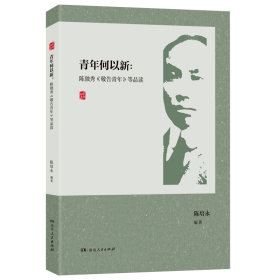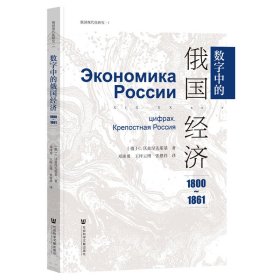
系统中药学()
大中专理科计算机 新华书店全新正版书籍
¥ 74.8 8.5折 ¥ 88 全新
库存14件
江苏无锡
认证卖家担保交易快速发货售后保障
作者彭成
出版社中国医药科技出版社
出版时间2021-12
版次1
装帧其他
货号1202552002
上书时间2023-02-11
- 在售商品 暂无
- 平均发货时间 7小时
- 好评率 暂无
- 最新上架
商品详情
- 品相描述:全新
- 新华文轩网络书店 全新正版书籍
- 商品描述
-
在中华民族浩瀚的历史长河中,中医药护佑着中华儿女,虽然经历无数灾难瘟疫,中华儿
女依然屹立,繁荣兴旺,生生不息。无数中医药前辈如神农、华佗、张仲景、李时珍等中医药大
家,发现大自然赋予人类的宝藏——中药,中药在世世代代中华儿女抗击疾病的过程中,展现出
了神奇的功效:清热解毒,祛风除湿,扶正祛邪,延年益寿……对急、慢性病的治疗效果不错。
但是中药功效是如何产生的,中药、方剂和中成药中含有什么样的物质,需要用什么样的方法才
能更为直观地揭示其发挥作用的物质基础和作用原理等,中外科学家、医药学家和各国人民都翘
首期盼能解开中药瑰宝的奥秘。
一味中药是一个系统吗?一个方剂是否是由多个子系统构成的复杂系统?复杂系统科学能否
用于研究中药和方剂?系统中药学团队将复杂系统科学引入中药学,在凌一揆教授提出的“大中
药”理论基础之上,提出中药是中药生态环境系统和人体复杂系统相互作用的复杂系统,并提出
六要素系统是影响中药复杂系统的关键因素,反映中药和中药方剂产生作用的奇妙机制,从而形
成“系统中药学”。
系统中药学是世代中药人智慧的结晶,是对凌一揆教授“大中药”思想的传承和创新。在“大中药”思想指导下,创办了中药学本科专业,中药人才辈出,系列中药学教材先后出版。这为系统中药学的发展奠定了坚实的基础。
系统中药学的诞生是对所有对中药学发展做出很好贡献的前辈科学家的致敬。为了更好地传
承和创新“大中药”思想,持续发展先辈科学家的成果,深度揭示中药的作用机理以及相关影响
因素,彭成教授于 2000年以来,在国家 973计划、国家自然科学基金重点项目等重量项目的
支持下带领其研究团队,以附子作为研究对象,传承“大中药”思想,并充分结合现代“系统科
学”的理论和方法,针对中药品种的多样性、化学成分的复杂性、药效作用的多向性、临床应用
的广泛性,研究附子不同来源,不同炮制品种,不同制备工艺,不同化学层次的空间特征、生态
特征、数量特征、化学特征和生物学特征,试图阐明附子空间、时间、剂量与效应之间的动态变
化过程,揭示中药附子的物质基础、生物效应和应用规律,在此基础上,形成了系统中药学的三
个子系统,提炼并形成了系统中药学的核心“品、质、制、性、效、用”及“多维评价”方法。
自此,系统中药学的理论技术体系和实践方法日渐成熟。
2019年,彭成教授组织全国 14所高校的中医学和中药学专家组成编委会,成功编著了全国
中医药行业高等教育“十三五”创新教材《系统中药学》。为了让中外科学家和医学家深刻理解
中药产生效果的机制,并在药物的研发和创新中更大地发挥中药的价值,激发世界医药界的学术
争鸣、国际间深入的学术探讨和合作,让中医药 5000年的发展成果贡献于世界人民的健康保健
1
事业,更加广泛、畅通地为世界医药事业的发展,为人民的健康福祉做贡献,在已出版的《系统中药学》创新教材基础上,经进一步修订、翻译,编写成本教材(双语教材)。
本教材分总论和各论两部分。总论重点介绍系统中药学和系统中药学关键要素的科学内涵、认知过程和现代研究。各论按中药功效分类,对临床常用中药的基本特点、品种品质、制药、性能功效、应用进行阐释。教材编写,力求做到六方面①系统性:根据系统中药学学科知识技术体系,总论按照概述、中药的品种、中药的品质、中药的制药、中药的药性、中药的功效、中药的应用七个方面布局;各论按照药物的基本概述、品种品质、制药、性能功效、应用展开,全面系统阐释系统中药学知识技术体系。②科学性:深入研究和厘清中药理论、技术、方法,充分体现特色,写作中表述力求客观、公正、平和,避免引起歧义和争议。同时,本教材中凡涉及基原、质量标准限定、性能、功效和主治,均以《中华人民共和国药典》2020年版为准。③创新性:教材不仅构建了系统中药学的知识技术体系,而且将中药系统研究的近期新成果写进教材,体现知识更新和进步。④实用性:针对目前教材存在知识点多、小、乱和前后重复的现状,写作上力求紧密结合“学科前沿、实际应用、执业需求”,达到“教师好教、学生好学、用者好用”的目的。⑤前瞻性:本教材不仅与时俱进,体现学科发展的新知识、新技术、新成果,而且为学科的交叉融合奠定了基础,体现前瞻性。⑥翻译的准确性:本教材具有较强的专业性,在英文翻译中针对古籍书名、中药名称、方剂名称的翻译,及中医药专业术语的翻译力求符合国际标准,并附有附录,以方便读者查询。在翻译中强调本土化,主要以《中医基本名词术语中英对照国际标准》(李振吉,2008)和《中华人民共和国药典》英文版等为参考,并编写五个附录便于读者查找。古文的翻译力求“信达雅”。
本教材由成都中医药大学牵头,联合长春中医药大学、安徽中医药大学、南方医科大学、陕西中医药大学、云南中医药大学、广东药科大学、中国医学科学院药用植物研究所、河南中医药大学、贵州中医药大学、河北中医学院、成都医学院、成都大学的专家学者进行了撰写;成都中医药大学裴瑾、李芸霞、谢晓芳进行了统稿,英文稿由成都中医药大学王寒冰审稿,世界中医药学会联合会翻译中心进行润色和审校,在此一并表示感谢 !
尽管我们在编写过程中竭尽所能,但由于作者较多、涉及交叉学科领域较广,系统中药学是我们开创的新学科,需要不断总结与发展,因此,本教材若存在不足或疏漏之处,恳请专家、同道和读者提出宝贵意见,以便再版时修订提高。
编 者2021年 6月
2
In the vast history of Chinese Nations, Chinese Medicine has been always blessing and protecting Chinese people. Despite countless disasters and plagues, the sons and daughters of China have been reborn, prosperous and endless. Countless TCM masters and ancestors as Shen Nong, Hua Tuo, Zhang Zhongjing and Li Shizhen, found the nature-given treasure - Chinese Medicinals, which have been carrying out miraculous e.ects in the course of generations of Chinese people .ghting against diseases. They can clear heat and detoxify, dispel wind and dissipate dampness, strengthen the body and dispel evils, as well as prolong lifespan. The effect is excellent both for many acute and chronic diseases. How does the above mysterious effect happen? What substances contained in Chinese medicinal and its formula or patent medicines? What kind of methods or techniques should be applied to explore their effect-related substance and active mechanism? Chinese and foreign scientists, medical scientists and people all over the world are looking forward to unraveling the mystery of Chinese medicine treasures.
Is one Chinese medicinal a system? Is the formula a complex system composed by multiple branch systems? Can Complex System Science (CSS) be applied to do research on Chinese medicinals and formulae? Taking the “large Chinese Materia Medica” as the theoretical basis, Systematic Chinese Material Medica (SCMM) Team introduced the CSS theory into Chinese Material Medica (CMM), and put forward a new theory that CMM is a complex system created by CMM ecological environment system interacting with human complex system, and propose there is a six - elemental co-acting system that a.ects this complex system and may re.ect the magic mechanism of CMM and formulae.
SCMM is the wisdom crystals of generations of Chinese Medicinal masters and experts, and the inheritance and innovation of “Large Chinese Material Medica” thought of Professor Ling Yikui. With the guidance of the “Large Chinese Material Medica” thought, it has established the undergraduate major of CMM, cultivated numerous Chinese medicine talents and a series of Chinese medicinal textbooks have been published. Thus, it laid a thick foundation for the development of SCMM.
The generation of SCMM is to salute to all predecessors and scientists during the Chinese Medicine development. In order to better inherit and innovate “Large Chinese Material Medica” thought, constantly develop the achievements of predecessors, deeply explore the functioning mechanism of Chinese medicinals as well as the factors resulting in e.ects, since the year of 2000, Prof. Peng Cheng has led his team to launch a research on Fuzi (Aconiti Lateralis Radix Preparata) with the supports of National 973 Plan, and projects of the National Natural Science Funding. They inherited the “large Chinese Material Medica” thoughts, and fully combined the theory and methods of modern system science, to study its di.erent sources, diverse processed products, various preparation processes, as well as spatial, ecological, quantitative, chemical, and biological characteristics from different chemical levels, so to endeavor illustrating the dynamic change process among time, dose and e.ect, and revealing the material basis, biological e.ect and application rules of Fuzi. Based on that, it forms three branch systems of SCMM, sublime its core as “Variety-Quality-Pharmacy-Proterty-E.cacy-Application” and the multiple evaluation technique. Hence, the theory and technology of SCMM tends to be maturing. In 2019, Prof. Peng Cheng
1
gathered Chinese Medicine experts and Chinese Medicinal experts from 14 colleges and universities nationwide to organize a composing committee, and compiled the 13th Five-year Plan innovative Chinese Materia Medica textbook Systematic Chinese Materia Medica of National TCM higher Education.
Aiming to let more scientists and pharmacologists deeply know the mechanism of Chinese Medicinal
exerting its e.cacy, to widely exert the Chinese Medicinal values in drug development and innovation,
trigger active academic arguments, promote international exchanges and cooperation in research and
industry, let the world people share the fruits of 5000 year’s development of Chinese Medicine, and .nally do more contributions for the health care and medical career for worldwide human beings, based
on the previous innovative textbook Systematic Chinese Materia Medica, through revising, translating, composing bilingually, this textbook will be published in both Chinese and English Language.
The book includes two parts as the pandect and monograph. The pandect mainly introduces the systematic Chinese materia medica as well as the scientific connotation, cognitive processes and modern research on the key elements of systematic Chinese materia medica. The monograph part is categorized according to e.cacy of medicinals. In each part, it further elucidate each medicinal the basic characteristics including variety and quality, pharmacy, property and efficacy, as well as application. The compilation of this textbook strives for the following six requests. ① Systematicness: According to the knowledge and technology system of Systematic Chinese Materia Medica, the pandect is laid out in terms of seven aspects, namely overview, variety, quality, pharmacy, property, e.cacy and application. The monograph part introduces Chinese medicinals from aspects of basic overview, variety and quality, pharmacy, property and e.cacy, and application. Thereby comprehensively and systematically expound the knowledge and technology system of Systematic Chinese Materia Medica. ② Scienti.calness: The theory, technology, and method of Chinese material medica are thoroughly researched and clari.ed to re.ect the characteristics su.ciently. Presentation in writing seeks to be objective, fair and harmonious, avoiding ambiguity and controversy. The Pharmacopoeia of the People’s Republic of China (2020 Edition) is chosen as the reference to write the origin, quality standard, property, e.cacy and indication of each Chinese medicinal in the book. ③ Innovativeness: The book not only constructs the knowledge and technology system of SCMM, but also summarizes the latest achievements of systematic research of Chinese material medica, which reflects the update and progress on knowledge in textbook.
④ Practicability: Aiming at the current problem of too many, small, confused and repetitious knowledge particles, this book sticks to set knowledge points tightly reflecting “frontier of the subject, practical application, practicing need”, for the purpose of “easy to teach, easy to learn, and easy to apply”.
⑤ Foresight: This book not only keeps pace with the times by reflecting the update knowledge, technology and achievements of the discipline development, but also lays the foundation for the intersection and integration among Chinese Medicine, Chinese Materia Medica and Systematic Science etc.. ⑥ Accuracy: This book has a strong professional nature. The translations of ancient books, names of Chinese material medica, prescriptions and terms are in line with international standards, which mainly include the WHO International Standard Terminologies on Traditional Medicine in the Western Paci.c Region (2007), International Standard Chinese-English Basic Nomenclature of Chinese Medicine (Li Zhenji, 2008), and the English version of The Pharmacopoeia of the People's Republic of China. It has attached five annexes for in the convenience of readers searching. The translation of ancient writings strives to meet “accuracy, smooth, and elegance”.
Led by Chengdu University of TCM, this book is compiled in collaboration with experts fro
图书标准信息
- 作者 彭成
- 出版社 中国医药科技出版社
- 出版时间 2021-12
- 版次 1
- ISBN 9787521427134
- 定价 88.00元
- 装帧 其他
- 开本 16开
- 纸张 胶版纸
- 页数 456页
- 字数 835千字
- 丛书 全国高等中医药院校中药学类专业双语规划教材
- 【内容简介】
- 本书是全国高等医药院校中药学专业双语规划教材,根据本学科教学大纲的基本要求和课程特点编写而成。体现高等院校中药学专业培养的特点,着力提高药学类专业学生的实践操作能力。坚持理论知识“必需、够用”为度。强调教材的针对性、实用性、条理性和先进性,既注重对学生基本技能的培养,又适当拓展知识面,实现职业教育与终身学习的对接,为学生后续发展奠定必要的基础。本书供中药学类专业师生使用。
- 【作者简介】
- 本书作者为成都中医药大学资深教授,从事中药学专业研究多年,获奖无数。教授本科生、研究生及留学生课程多年,教授形式生动、活泼,深受学生喜爱。
点击展开
点击收起
相关推荐
— 没有更多了 —

















以下为对购买帮助不大的评价